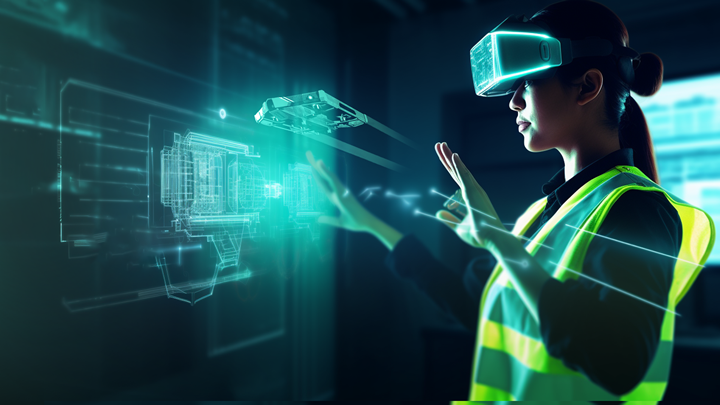Unlocking the Potential of Robotics through AI-Driven Practical Human Supervised Autonomy

AI-driven robotics holds immense promise for revolutionizing various industries and aspects of our lives. Imagine robots assisting firefighters and police officers in real live missions, autonomously navigating disaster zones to locate survivors, or efficiently managing complex logistics operations. However, real-world applications still face hurdles. One of the primary challenges lies in equipping robots to understand and navigate dynamic environments and make informed decisions based on that information. This is where Practical Human Supervised Autonomy (PHSA) emerges as a game-changer.
The Challenges of Real-World Robotics
Real-world missions are inherently diverse and unpredictable, rarely involving ‘repetitive tasks’. Robots must interact with humans and objects in dynamic settings, often requiring quick and safe choices. This complexity poses significant challenges for traditional robotic approaches.:
- Understanding the World: Robots need to perceive their surroundings accurately, identify objects and situations, and interpret sensory data effectively.
- Decision-Making: Based on their understanding of the environment, robots must make informed decisions, often in time-sensitive situations, considering potential risks and consequences.
- Human Interaction: Safe and efficient collaboration with humans is crucial for many applications, requiring robots to understand human behaviour and respond appropriately.
AI to the Rescue
Artificial intelligence offers powerful tools to address these challenges. For example, AI algorithms can:
- Train robots to perceive and interpret sensory data: Computer vision, for example, can enable robots to recognize objects, track movement, and understand their surroundings.
- Develop decision-making capabilities: Machine learning algorithms can learn from data and experience to make informed choices in various situations.
- Facilitate human-robot interaction: Natural language processing can enable robots to understand and respond to human communication, while social robotics can guide robots to interact safely and collaboratively with humans.
- Despite these advancements, developing robots capable of handling complex, high-risk tasks solely through AI remains a long-term goal.
AI-Driven Practical Human Supervised Autonomy
PHSA proposes a more pragmatic approach, leveraging the strengths of both AI and human intelligence. The core idea is to create robots that can learn and perform tasks autonomously, but within a framework of human supervision and collaboration. This approach offers several advantages:
- Reduced Development Time: Instead of building fully autonomous robots from scratch, PHSA focuses on developing specific AI modules that can handle individual tasks. This allows for faster development and quicker integration of robots into real-world applications.
- Human Expertise in the Loop: Human supervisors provide guidance and professional expertise, ensuring safe and efficient task completion, especially in complex or unpredictable situations.
- Continuous Learning: Through interaction with humans and the environment, robots continuously learn and refine their skills, gradually reducing their reliance on human supervision.
PHSA relies on several key elements or building blocks:
- Modular AI Skills: Robots are equipped with specialized AI modules trained for specific tasks, such as obstacle avoidance, object manipulation, or path planning.
- Human-Robot Communication: Effective communication channels enable seamless interaction between humans and robots, allowing for guidance, feedback, and error correction.
- Shared Decision-Making: Humans and robots collaborate on decision-making, with humans overseeing high-level strategies and robots handling tactical execution.
Real-World Applications of PHSA
PHSA has the potential to revolutionize numerous fields:
- First-response: Robots, guided by human supervisors, can assist in search and rescue operations, navigating hazardous environments and locating survivors.
- Logistics and Manufacturing: Collaborative robots can work alongside humans in warehouses and factories, performing tasks like picking and packing or assembly line operations.
- Healthcare: Robotic assistants, supervised by medical professionals, can aid in surgery, rehabilitation therapy, or patient monitoring.
Promising a path towards realizing the full potential of AI-driven robotics. By embracing human-robot collaboration, we can develop intelligent and adaptable systems capable of tackling complex tasks in real-world scenarios. This paves the way for a future where humans and robots work together, not as replacements, but as synergistic partners, driving innovation and progress across diverse fields. The potential of AI-driven robotics is undeniable. By embracing Practical Human Supervised Autonomy, we can bridge the gap between AI's capabilities and the demands of real-world applications. This collaborative approach holds the key to unlocking the potential of robotics.
 Matteo Shapira is co-founder and CXO of XTEND.
Matteo Shapira is co-founder and CXO of XTEND.
XTEND provides revolutionary human-guided autonomous machine systems that enable any operator to perform extremely accurate manoeuvres and actions, in any environment with minimal training. The company’s patented XOS operating system fuses the best of human intelligence and machine autonomy to enhance the operator’s abilities, and simultaneously reduce the need for physical confrontation, thereby minimizing casualties and injuries. Hundreds of XTEND’s systems are already operationally deployed worldwide, and the company is continuously developing its XOS operating system and platforms to deliver the future of human-machine teaming to defense, HLS, and security professionals worldwide. Find out more here.
Comments (0)
This post does not have any comments. Be the first to leave a comment below.
Featured Product

